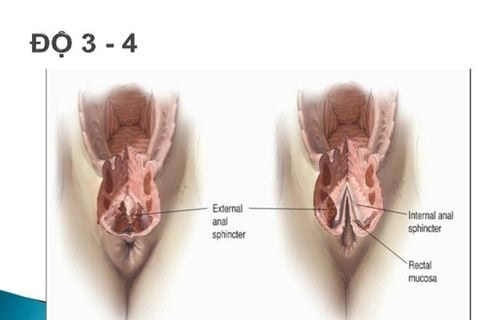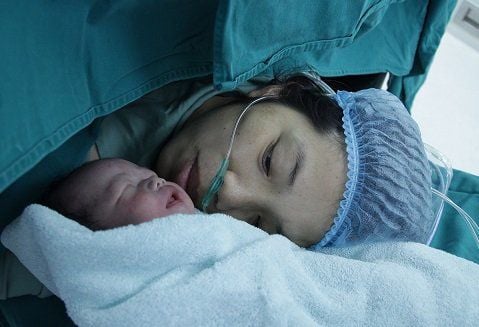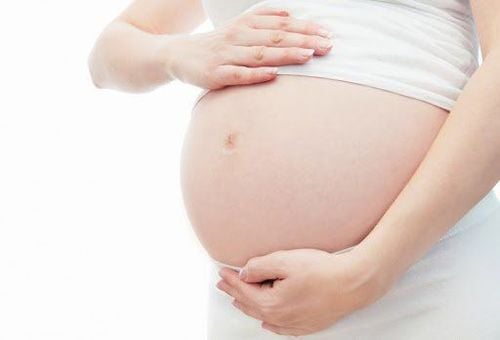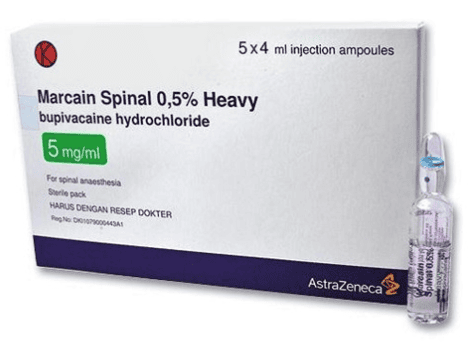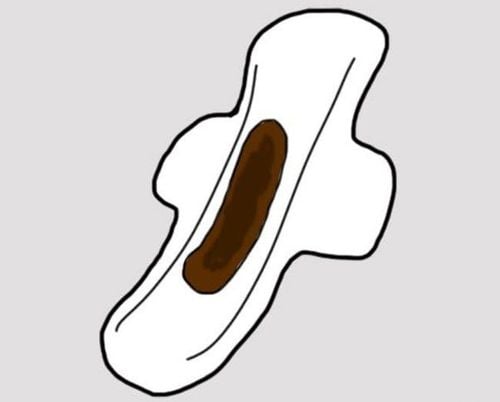This is an automatically translated article.
During a woman's pregnancy, normal labor plays a very important role in bringing the fetus as well as its appendages out of the body through the vagina. In particular, the phenomenon of labor pain is caused by uterine contractions, the characteristics of uterine contractions during labor is a very important part that any pregnant woman needs to pay attention to.1. Normal labor process
Normal labor is defined as a physiological process of the body that causes the fetus, the fetal appendage to be brought out of the uterus through the mother's genital tract.Physiological labor means that the labor takes place normally through the vagina, without any intervention, different from other abnormal labor cases.
The normal course of labor is diagnosed based on the following signs:
Abdominal pain intermittently, increasing in severity, this is a feature of uterine contractions during labor, abdominal pain during uterine contractions is known. time called labor pain. Increased vaginal pink mucus secretion. Cervical clear, open. There is the formation of the amniotic head. There is progress of the fetal position through each uterine contraction that occurs.
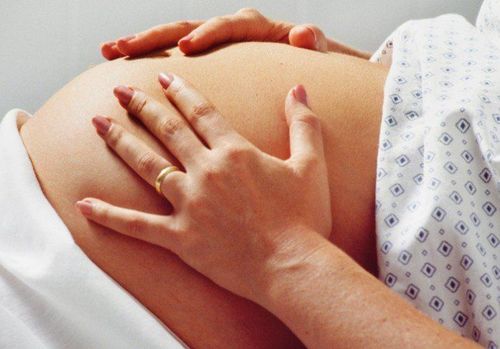
Stage 1: Clearing, opening of the cervix. At this stage, there are 2 sub-phases, the latent phase and the active phase. In the latent stage, the cervix dilates from 0 to 4 cm and lasts from 8 to 10 hours. The active phase of the cervix dilates from 4cm to 10cm and lasts more than 7 hours. Stage 2: the delivery phase, which takes place from the time the cervix is fully dilated until the delivery, occurs within 1 hour. Stage 3: placenta, from the time the pregnancy is delivered to the time the pregnancy comes out. This phase lasts for 1 hour.
Trắc nghiệm: Đặc điểm cơn đau đẻ và diễn biến cuộc chuyển dạ
Cơn đau đẻ là dấu hiệu thông báo sự chào đời của em bé. Cùng thử sức với bài trắc nghiệm sau đây sẽ giúp các bà mẹ mang thai nhận biết cơn đau đẻ và diễn biến cuộc chuyển dạ để chuẩn bị trước tâm lý những gì sắp xảy ra đối với mình.The following content is prepared under supervision of Thạc sĩ, Bác sĩ y khoa, Tạ Quốc Bản , Sản phụ khoa , Khoa Sản phụ khoa - Bệnh viện Đa khoa Quốc tế Vinmec Phú Quốc
2. Characteristics of uterine contractions during labor
Uterine contractions are considered the driving force behind the body's normal labor process. If there are abnormal changes in uterine contractions such as contraction disorders, it can lead to prolonged labor, causing dangerous complications for both mother and baby.The peculiarity of uterine contractions in labor is that uterine contractions are a natural occurrence in the physiology of labor and cause pain, or what is commonly called "birth pain". The pain caused by uterine contractions is different for each woman and usually when the pressure of the uterine contraction is up to 25-30 mmHg, the pregnant woman will feel pain. The pain usually comes on late, after uterine contractions, and it goes away before the contractions stop.
Uterine contractions usually originate in the right horn of the woman's uterus, spreading from top to bottom with a speed of 1-2cm/s. Normal uterine contractions will be cyclical and regular in nature, gradually increasing, lasting longer, specifically during labor induction, the frequency is only 15-20 seconds, then it will be 30-40 seconds in At the end of erasure, cervical dilation.
In addition, uterine contractions of the 3rd nature decrease as follows: the pressure of uterine contractions decreases in the top-down direction, the contraction time of the uterine muscles gradually decreases from top to bottom, and the contractions are spread. The uterus will similarly decrease from top to bottom. In the physiology of labor, the number of uterine contractions is usually 70-180 and also depends on the number of births of the woman as well as the nature of the birth and how easy or difficult, the quality of the uterine muscles.
During the delivery stage, the second stage of normal labor, the combination of uterine contractions and abdominal wall contractions helps push the fetus out. The mechanism of this process is as follows: the diaphragm pushes down, the abdominal wall muscles contract, so the volume of the abdomen decreases, causing the abdominal pressure to increase, pressing on the bottom of the cervix to push the fetus down. At the end of the pregnancy, the pressure of the uterine contractions gradually increased and the abdominal wall contraction took place, causing the amniotic pressure to increase to 120-150 mmHg.
For the prognosis of the delivery, uterine contractions also play an important role in making the delivery go well without having to interfere with any methods or assistive devices. Uterine contractions, if rhythmic, regular and corresponding to the dilation of the woman's cervix, will help the birth have a good prognosis, specifically as follows:
Latent stage: 2-3 contractions /10min The stage when the cervix is dilated from 5cm to 6cm: 3-5 times/10min. The stage when the cervix is dilated 10cm and the woman is performing labor: 4-6 times/10 minutes. On the contrary, if uterine contractions are irregular, asynchronous, increasing or decreasing frequency, too strong or too weak, it will also lead to problems such as fetal failure, placental abruption, uterine rupture, postpartum bleeding, postpartum infection...

3. Measures to study uterine contractions
3.1 Manual Survey This is an inaccurate measure and does not reliably assess the strength of uterine contractions. The doctor puts his hand on the pregnant woman's abdomen, examines the length of a uterine contraction and the time interval between 2 consecutive uterine contractions3.2 External recording method Place the Murey drum at the fundus of the uterus , then measure the pressure of uterine contractions in mmHg. The external recording method can measure the frequency and length of uterine contractions, but does not measure the partial pressure of uterine contractions as well as that pressure in the dark chamber.
3.3 Method described in Insert a thin, soft catheter into the amniotic cavity in the pregnant woman's abdomen to measure the uterine contraction pressure in the dark chamber and the basal tone of the uterus as well as the frequency and intensity of contractions bow. In addition, it is also possible to place the microball into the uterine muscle at different positions to measure the pressure of uterine contractions in different areas of the uterus, record the starting point of uterine contractions, change the pressure. uterine contractions and the spread of uterine contractions.
Uterine contractions are considered to be the main driving force in the physiology of labor, helping the process of bringing out the fetus as well as the fetus's appendages smoothly. The characteristics of uterine contractions in labor such as natural, frequency and intensity gradually increase over time, can be reduced or increased by drugs and cannot be stopped are notes that pregnant women should know during labor. her labor and delivery process.
Vinmec International General Hospital offers a Package Maternity Care Program for pregnant women right from the first months of pregnancy with a full range of antenatal care visits, periodical 3D and 4D ultrasounds and routine tests to ensure that the mother is healthy and the fetus is developing comprehensively. Pregnant women will no longer be alone when entering labor because having a loved one to help them during childbirth always brings peace of mind and happiness.
Please dial HOTLINE for more information or register for an appointment HERE. Download MyVinmec app to make appointments faster and to manage your bookings easily.





